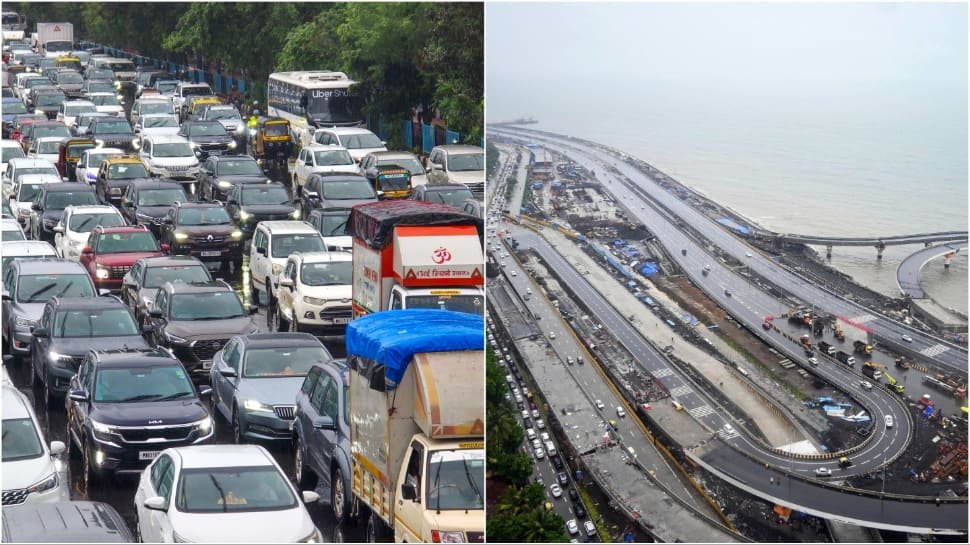Travel Guides & Articles
India-China Flights Resume: A Curated Guide To Beijing And Beyond | Travel

India-China Flights Resume: A Curated Guide To Beijing And Beyond
After a hiatus of more than five years, India and China are set to resume direct flights—a move that not only reconnects two of the world’s biggest economies but also reopens the door for travellers eager to explore one of Asia’s most storied destinations. For those planning their first journey to Beijing, the Chinese capital offers a striking mix of ancient dynasties and futuristic skylines. And for travellers with more time, China’s vast landscape stretches far beyond its capital, promising a mosaic of history, culture, and natural wonders.
5 Must-See Experiences In Beijing For First-Time Visitors
1. The Great Wall of China
No first trip to China is complete without walking along the world’s most iconic fortification. Just outside Beijing, sections like Mutianyu and Jinshanling offer panoramic mountain views and fewer crowds than the busy Badaling stretch.
2. The Forbidden City
Step into the heart of imperial China at this UNESCO World Heritage site, once the seat of Ming and Qing emperors. The sprawling palace complex with its golden rooftops and intricate courtyards is a living museum of the country’s dynastic past.
3. Tiananmen Square
One of the world’s largest public squares, Tiananmen is both a political landmark and a place to witness the sheer scale of China’s national identity. Surrounded by monumental architecture, it’s best visited at dawn when the flag-raising ceremony takes place.
4. Summer Palace
A retreat from the bustle of the city, the Summer Palace offers willow-fringed lakes, ornate pavilions, and landscaped gardens. A boat ride across Kunming Lake is particularly magical in the late afternoon light.
5. Temple of Heaven
This 15th-century masterpiece of Ming architecture is where emperors once prayed for good harvests. Its circular Hall of Prayer for Good Harvests, with its triple-gabled roof, is a striking symbol of China’s spiritual traditions.
Beyond Beijing: 5 Destinations To Discover In China
Shanghai: A dazzling fusion of old-world elegance and modern ambition, Shanghai’s historic Bund contrasts with Pudong’s futuristic skyline. The city is also a culinary haven, from Michelin-starred dining to street-side dumpling stalls.
Xi’an: Once the eastern terminus of the Silk Road, Xi’an is most famous for the Terracotta Army. Its city walls and Muslim Quarter markets make it a must for history lovers.
Chengdu: Known worldwide for its panda sanctuaries, Chengdu is also the heart of Sichuan cuisine. Don’t leave without sampling a traditional hotpot.
Hangzhou: Beloved for the poetic beauty of West Lake, Hangzhou combines tranquil waters with tea plantations and ancient temples, making it a city of slow pleasures.
Guilin: Often described as China’s most beautiful landscape, Guilin’s karst mountains and the Li River create a painterly scene that has inspired generations of poets and artists.
Travel News – Find latest news and tips based on Indian and World travel including top 10 travel destination, tourism information, how to reach visit and more at Times Now.
Travel Guides & Articles
Zanskar: India’s deep, silent gorge where you can hear your own pulse
Zanskar: The untamed pulse of Ladakh
High in the Indian Himalaya, Ladakh is renowned for its stark beauty — the cobalt skies, the high mountain passes, the centuries-old monasteries that cling to its cliffs. Yet hidden within its rugged folds lies an even greater marvel: the Zanskar canyon. This is Ladakh stripped to its rawest essence, a gorge so deep and silent that it seems to hold the memory of time itself. Through it runs the Zanskar river, one of the most challenging and extraordinary white-water journeys in the world.
A geological cathedral
Unlike the celebrated high passes and monasteries of Ladakh, the Zanskar canyon remains little spoken of, even among seasoned travellers. Here, the landscape feels almost unearthly: cliffs burn red under the sun, streaked with copper and purple seams, while turquoise waters slice through their base. Waterfalls erupt directly from rock walls, plunging into the river below. The effect is that of a natural cathedral, vast and humbling, where time is measured not by hours but by bends in the river and the slow carving of stone.
A river alive
The Zanskar is no ordinary river. Glacier-fed and wild, it is alive with shifting moods. At times, it compresses into narrow corridors, releasing ferocious Class IV and V rapids that demand grit and precision. At others, it opens to skies so immense they seem to swallow the traveller whole. Many describe it as a living force — breathing, roaring, and singing beneath the sun. To enter its waters is not to conquer but to belong, if only briefly, to something larger than oneself.
More than rapids
An expedition down the Zanskar is as much a cultural journey as it is an adventure. Along its banks, monasteries dating back hundreds of years bear witness to the enduring spirituality of the region. Villages appear as pockets of resilience, their inhabitants living in tune with the seasons, still untouched by the curated experiences of mass tourism. The echoes of prayer wheels mix with the rumble of river and wind, while children wave from cliffside paths, their smiles carrying both curiosity and quiet blessings.
Evenings on the riverbank reveal another dimension of the journey. Camps at 14,000 feet offer the simple luxuries of warm meals, fresh fruit, and star-lit skies. It is in these pauses that the magnitude of the place truly settles: the bustle of the current, the stillness of the body, the reminder that the river demands respect rather than conquest.
A global classic under threat
For the global rafting community, Zanskar holds legendary status. Often called the “Grand Canyon of Asia,” it ranks among the world’s great river expeditions. Yet unlike the American Canyon, Zanskar remains without protection. Development creeps ever closer, with new roads and infrastructure threatening to alter the fragile balance of this landscape. The construction may bring accessibility, but it also risks eroding the ecological and cultural integrity that make the river unique.
Adventure travel pioneer Vaibhav Kala, who has guided expeditions here since the earliest days of river running in India, is unequivocal in his appeal for urgent action:
“As the roads connect remote Zanskar, governance is served. Now, we must preserve one of the grandest natural spectacles in the country, for our future generations; and preserve it with legislated protection, fierce in its ambit, with only responsible tourism allowed within the confines of what must be declared a National Sanctuary.”
A call for preservation
The Zanskar river expedition is not simply an adrenaline pursuit; it is an immersion into an elemental world of stone, water, and silence. It transforms the way travellers measure life, replacing the rhythm of clocks with the cadence of rapids, camps, and constellations.
But this transformation is possible only if the river is protected. Without decisive measures, one of India’s greatest natural treasures could be compromised beyond repair. The task before us is clear: to secure Zanskar’s future as both a global adventure classic and a national natural heritage monument.
In safeguarding the Zanskar, India would not only protect a spectacular river system but also uphold a legacy — a reminder that some places are too rare, too powerful, and too precious to be left unguarded.
Disclaimer: The views expressed in this article are those of the author/authors and do not necessarily reflect the views of ET Edge Insights, its management, or its members
Travel Guides & Articles
Afghan FM Muttaqi’s planned India visit put off over UN travel sanctions – Firstpost

Afghan foreign minister Amir Khan Muttaqi’s planned visit to India later this month has been put on hold after he failed to secure a UN waiver for foreign travel, officials said. The trip would have been the first ministerial visit from Kabul to New Delhi.
Afghan foreign minister Amir Khan Muttaqi was scheduled to visit India later this month, but the trip has been put off due to UN Security Council sanctions that restrict his foreign travel, PTI reported citing people familiar with the matter on Friday. The visit was postponed after he failed to obtain a waiver, they said.
Had it taken place, it would have been the first ministerial visit from Kabul to New Delhi since the Taliban seized power in August 2021.
Under the UN sanctions regime, Taliban leaders are required to secure special clearance for international travel.
When asked about reports of Muttaqi’s planned visit, External Affairs Ministry spokesperson Randhir Jaiswal refrained from a direct confirmation.
“We have longstanding ties with the people of Afghanistan. India continues to support their aspirations and developmental needs,” he said. “We continue to engage with Afghan authorities. If there is an update, we will share it with you.”
External Affairs Minister S. Jaishankar had earlier spoken with Muttaqi on May 15, marking the highest-level contact between the two sides since the Taliban takeover.
India has not recognised the Taliban administration, instead urging the formation of an inclusive government in Kabul. New Delhi has also maintained that Afghan soil must never be used for terrorist activities against any country.
Meanwhile, after a series of earthquakes struck eastern Afghanistan, killing over 800 people and injuring more than 2,800, India rushed urgent humanitarian aid to support relief efforts.
Following the collapse of the Ghani government, India shut its embassy in Kabul and evacuated staff from consulates in Kandahar and Mazar-e-Sharif. However, over the past two years, New Delhi has gradually expanded its engagements with Taliban representatives.
Since 2021, India has sent 50,000 tonnes of wheat, 350 tonnes of medicines, 40,000 litres of Malathion fertiliser, and 28 tonnes of relief material to Afghanistan, including assistance after the 2023 Herat earthquake.
Travel Guides & Articles
Your Ganpati Visarjan Travel Guide: Mumbai Police Release Full List Of Traffic Diversions And Alternate Routes | India News

As Ganpati Visarjan festivities are going to be organized throughout Mumbai today, the traffic police in the city have released an exhaustive advisory announcing diversions, alternative routes, and restrictions on traffic movement. Travelers are requested to make advance travel plans so as to avoid inconvenience.
Traffic Restrictions and No-Parking Zones
Some roads in Central Mumbai and the Western Suburbs will be impacted by the celebrations. The movement of goods vehicles is strictly banned on major roads to enable a smooth flow of pedestrian and festival traffic.
Central Mumbai:
- Worli: Dr. Annie Besant Road and RG Thandani Road: No parking.
- Dadar: Goods vehicles are prohibited on Gokhale Road, SK Bole Road, and Swatantravir Savarkar Marg. Parking stands prohibited on Swatantravir Savarkar Marg, MB Raut Marg, and Shivaji Park Road No. 5.
- Mahim: Goods vehicles are prohibited on Gen AK Vaidya Marg, LJ Road, Mori Road, and TH Katariya Marg.
- Matunga: Goods vehicles are prohibited on Tilak Bridge Road, and parking stands prohibited on Dr. BA Road.
- Kurla: Goods vehicles are banned on LBS Road, New Mill Road, and KK Krishna Menon Road.
In view of Anant Chaturdashi & Ganpati Visarjan following traffic arrangements will be in place in Central Mumbai.
Citizens are requested to plan their commute accordingly.#MTPTrafficUpdateshttps://t.co/gnNcQDYW0d
— Mumbai Traffic Police (@MTPHereToHelp) September 5, 2025
Western Suburbs:
Santacruz: Goods vehicles are banned on Devle Road and Vaikunthalal Mehta Marg. Parking is restricted on Janardhan Mahtre Road and Juhu Road, among others.
In view of Anant Chaturdashi & Ganpati Visarjan following traffic arrangements will be in place in Western Suburbs of Mumbai.
Citizens are requested to plan their commute accordingly.#MTPTrafficUpdates https://t.co/SY0R0p9e8z
— Mumbai Traffic Police (@MTPHereToHelp) September 5, 2025
DN Nagar & Goregaon: No-parking zones are in force on a number of important roads, such as JP Road and MG Road.
Kandivali: Goods vehicles are banned on KT Son Marg, Kalpana Chawla Chowk, and Abdul Hamid Road. MG Road and SV Road have no-parking zones.
Suggested Alternate Routes
To relieve congestion, the Mumbai Traffic Police have provided alternative routes to commuters. Motorists can travel via routes like Gold Spot Junction (Bisleri Junction) to Bahar Junction and Shivaji Chowk to Captain Gore Bridge (Parle Bridge) as effective alternates to travel within the city.
ALSO READ | Mumbai Bomb Threat Suspect Arrested In Noida, Police Thwart Ganesh Festival Scare
-

 Business1 week ago
Business1 week agoThe Guardian view on Trump and the Fed: independence is no substitute for accountability | Editorial
-
Tools & Platforms4 weeks ago
Building Trust in Military AI Starts with Opening the Black Box – War on the Rocks
-

 Ethics & Policy1 month ago
Ethics & Policy1 month agoSDAIA Supports Saudi Arabia’s Leadership in Shaping Global AI Ethics, Policy, and Research – وكالة الأنباء السعودية
-

 Events & Conferences4 months ago
Events & Conferences4 months agoJourney to 1000 models: Scaling Instagram’s recommendation system
-

 Jobs & Careers2 months ago
Jobs & Careers2 months agoMumbai-based Perplexity Alternative Has 60k+ Users Without Funding
-

 Education2 months ago
Education2 months agoVEX Robotics launches AI-powered classroom robotics system
-

 Podcasts & Talks2 months ago
Podcasts & Talks2 months agoHappy 4th of July! 🎆 Made with Veo 3 in Gemini
-

 Funding & Business2 months ago
Funding & Business2 months agoKayak and Expedia race to build AI travel agents that turn social posts into itineraries
-

 Education2 months ago
Education2 months agoMacron says UK and France have duty to tackle illegal migration ‘with humanity, solidarity and firmness’ – UK politics live | Politics
-

 Podcasts & Talks2 months ago
Podcasts & Talks2 months agoOpenAI 🤝 @teamganassi





















